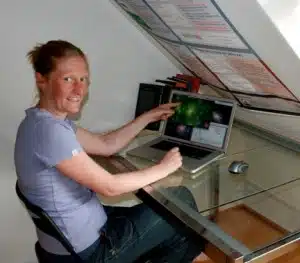Queensland astronomers have used the entire universe to weigh the smallest building blocks of nature.
Dr Signe Riemer-Sorensen and a research team at The University of Queensland used a three-dimensional map of 250,000 galaxies to measure neutrinos, helping us to better understand galaxy formations, supernova explosions and the processes fuelling our sun and stars.
“Neutrinos are very common but we don’t know simple things about them, like their weight,” says Signe, who undertook the research as part of her postdoctorate.
“They’re so small and hard to detect that one of the laboratory experiments required a cubic kilometre of ice underneath the South Pole to see them. We’ve used the entire universe as a particle physics experiment,” Signe says.
“We took an Australian 3D map of galaxies and compared it to theoretical predictions. The resulting limit on the neutrino mass is 10 times better than what you get from the laboratories,” she says.
Neutrinos are the smallest fundamental particles that make up everything and yet pose some of the biggest puzzles in modern physics. They affect the formation of the galaxies whose distribution depends on how much neutrinos weigh.
The research applications are currently theoretical but Signe believes the benefits could be far-reaching.
“At the moment, this has absolutely no practical application, but I don’t think Franklin or Faraday thought about mobile phones when they investigated electromagnetism more than 200 years ago,” she says.






 Fresh Science is on hold for 2022. We will be back in 2023.
Fresh Science is on hold for 2022. We will be back in 2023.